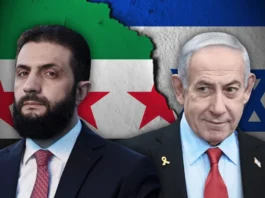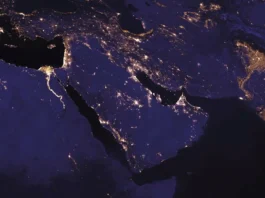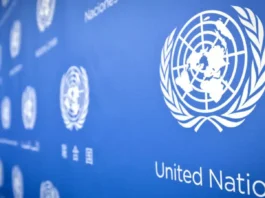Introduction
Diplomatic negotiations are far more than political theater or headline grabbing handshakes. They are the backbone of peaceful international relations, resolving disputes, establishing alliances, and shaping the global agenda on everything from trade to climate change. Yet behind closed doors, the process is deeply complex, rooted in historical precedence, theoretical models, cultural nuance, and strategic planning.

This article offers a comprehensive exploration of diplomatic negotiations: their origins, evolution, and practical application in the modern world. We will examine theoretical frameworks, negotiation types, real-life challenges, cultural dynamics, and groundbreaking examples like the Iran Nuclear Deal and the Paris Agreement. Whether you’re a student, policymaker, or simply curious, this guide is designed to feed your curiosity and deepen your understanding.
Historical Context: From Power Politics to Constructive Engagement
Historically, diplomacy was driven by raw power. The strategies of Machiavelli or Henry Kissinger reflected a realist mindset: negotiation was a tool to advance national interest and influence. However, as the global system evolved, so did diplomacy. Modern negotiation now incorporates empathy, mutual benefit, and cultural intelligence.

From the Peace of Westphalia to the Camp David Accords, diplomatic milestones demonstrate a shift toward more nuanced approaches. The inclusion of civil society, rising importance of soft power, and digital diplomacy tools have modernized how leaders interact. In short, today’s negotiations are more inclusive, multilateral, and dynamic than ever before.
Types of Diplomatic Negotiations: Modes of Dialogue
Bilateral Negotiations
Direct talks between two parties, often states, to resolve specific issues. These are typically clear-cut but can become sensitive, especially in conflict zones (e.g., U.S.-Cuba talks).
Multilateral Negotiations
Engage multiple countries or organizations on broad issues such as climate change or trade. Examples include WTO rounds or UN climate summits. These are slower but offer greater legitimacy.
Shuttle Diplomacy
Mediators act as go-betweens for parties unwilling to speak directly. Common during armed conflicts, e.g., Kissinger’s shuttles in the Middle East.
Track II Diplomacy
Non-official negotiations involving academics, NGOs, and retired diplomats. Often, these informal talks pave the way for Track I diplomacy.
Theoretical Frameworks: Realism, Liberalism, Constructivism
Realist Approach
Focuses on power, security, and national interest. States are rational actors in a competitive world. Diplomacy is a means to maximize self-interest.
Liberal Approach
Emphasizes international cooperation, norms, and institutions. Sees diplomacy as a tool for peacebuilding, development, and mutual gain.
Constructivist Approach
Views diplomacy through the lens of culture, identity, and perception. Negotiation behavior is shaped by norms and historical relationships.
Each of these models explains different motivations behind state behavior and strategy selection.
Preparation Phase: Setting the Stage for Success
Preparation is the unsung hero of effective negotiation. According to global negotiation experts, over 80% of outcomes are determined before talks even begin.
- Research the counterparts: Understand their motivations, red lines, political climate.
- Clarify your goals: Prioritize objectives and define what compromises are acceptable.
- Develop strategy: Map stakeholders, anticipate objections, and draft contingency plans.
- Cultural mapping: Study the cultural norms and communication styles of the other side.
Communication and Strategic Dialogue
Effective communication isn’t just about talking—it’s about listening, signaling intentions clearly, and maintaining consistency. Strategies include:
- Active listening to show empathy and build trust.
- Mirror framing: Rephrasing the other side’s arguments to show understanding.
- Building narrative: Shaping how your position is perceived.
Challenges in Diplomatic Negotiation: The Invisible Obstacles
Cultural Differences
Misunderstandings often arise from variations in communication styles, body language, or assumptions. High-context cultures (e.g., Japan) differ dramatically from low-context ones (e.g., Germany).
Trust and Goodwill
Trust must be built carefully and can be shattered easily. This is especially true in post-conflict negotiations.
Emotional Factors
National pride, trauma, and historical grievances influence negotiation behavior. Emotionally intelligent diplomats are better equipped to navigate this terrain.
Political & Historical Context
A negotiation doesn’t occur in a vacuum. Past conflicts, power imbalances, and political instability can complicate even minor agreements.
Case Studies: Negotiation in Action
The Iran Nuclear Deal (JCPOA)
Spanning over a decade, this deal involved multiple global powers and aimed to prevent Iran from developing nuclear weapons. It required both formal talks and backchannel diplomacy. Despite its fragility, it stands as an example of multilateral success.
The Paris Agreement
A landmark climate accord signed by 196 parties. Negotiations had to bridge the needs of developing and developed nations, making compromise critical. The agreement’s success was due to flexibility, shared goals, and strong facilitation.
United Nations, Paris Agreement
The Oslo Accords
An example of integrative diplomacy that aimed for a win-win solution to the Israeli-Palestinian conflict. While results were mixed, the process demonstrated the power of trust-building and informal dialogue.
Modern Developments: The Digital & Multipolar Age
- Digital Diplomacy: Social media and secure messaging apps have enabled rapid communication and public signaling.
- Rise of Non-State Actors: NGOs, multinational corporations, and even influencers now shape global narratives.
- Multipolar Negotiations: Beyond the U.S. and China, regional powers like India, Brazil, and Turkey now assert growing influence.
Conclusion: Toward a New Era of Negotiation
Diplomatic negotiations are no longer the exclusive domain of powerful men in smoky rooms. They now involve diverse actors, platforms, and cultural perspectives. The world needs negotiators who are not just strategic, but also empathetic, adaptable, and informed.
Whether addressing war or climate change, the process remains rooted in the same timeless principles: preparation, communication, trust, and creativity. Understanding this process is key not only for students of international relations but for any global citizen who wants to make sense of how our world is shaped.
Key Takeaways
- Diplomatic negotiations evolve with technology, politics, and culture.
- Theoretical approaches (realism, liberalism, constructivism) offer lenses to understand state behavior.
- Preparation and communication are critical for success.
- Case studies like the Iran Deal and Paris Agreement show both success and fragility.
- Cultural intelligence is as important as strategic thinking.
FAQ
What are diplomatic negotiations?
Structured dialogues between countries or entities aimed at resolving issues or forming agreements.
What are common types of diplomatic negotiation?
Bilateral, multilateral, shuttle diplomacy, and Track II (informal).
How do cultural differences affect negotiations?
They influence communication styles, perceptions of respect, and timing.
Why is preparation important in diplomacy?
It defines strategy, reduces risk, and enhances confidence.
Can digital tools aid diplomacy?
Yes, they enable real-time communication, public diplomacy, and greater transparency.




